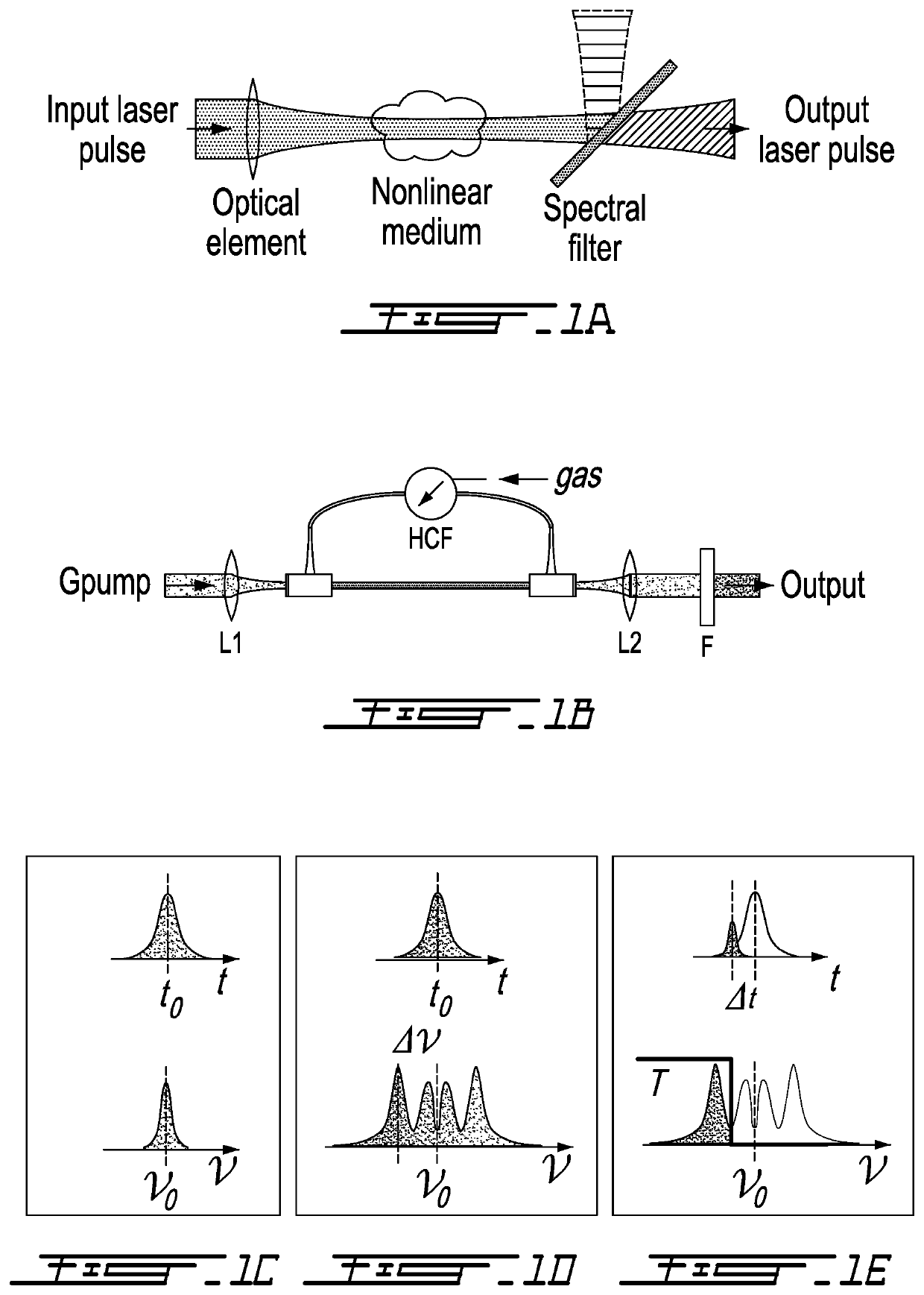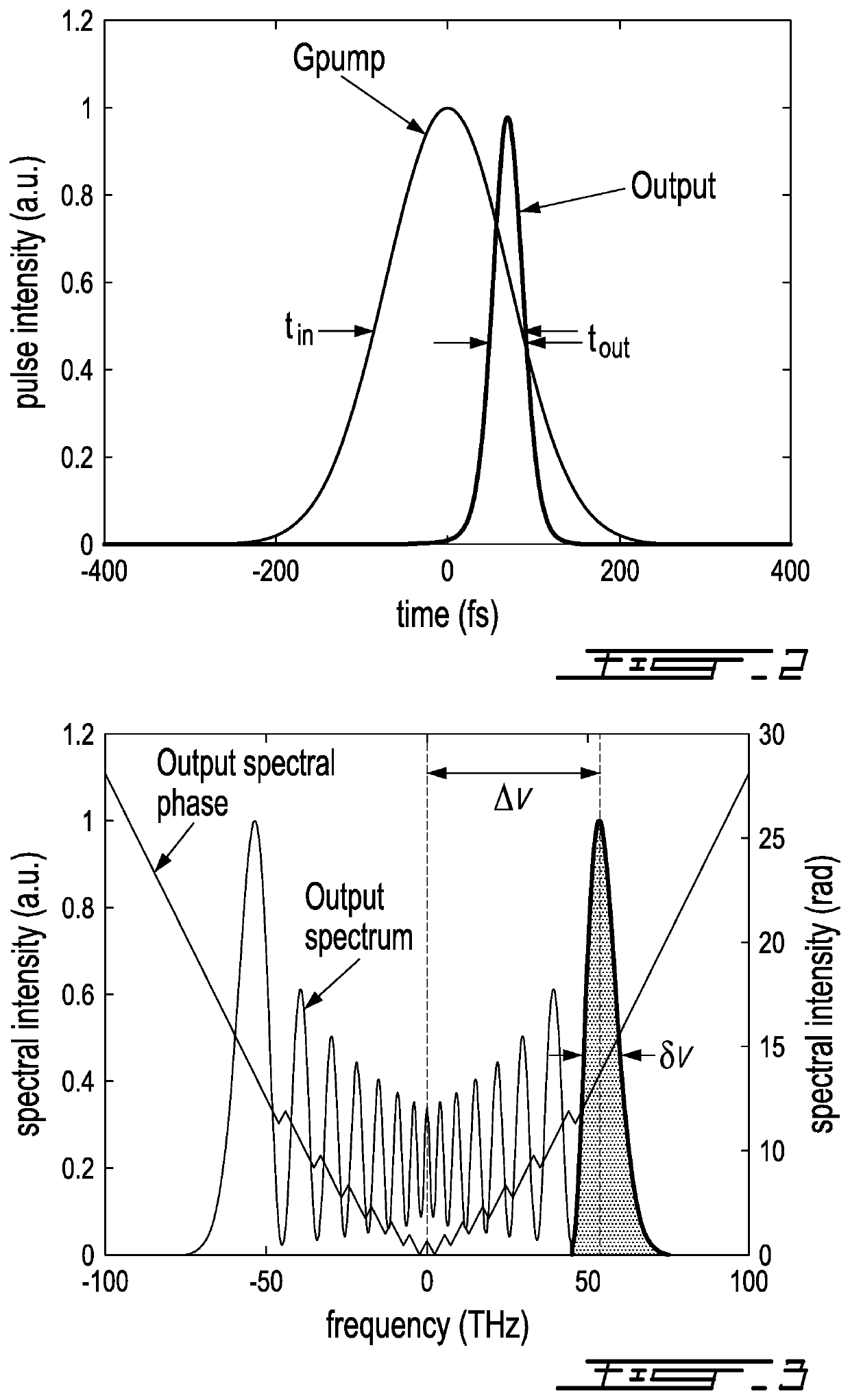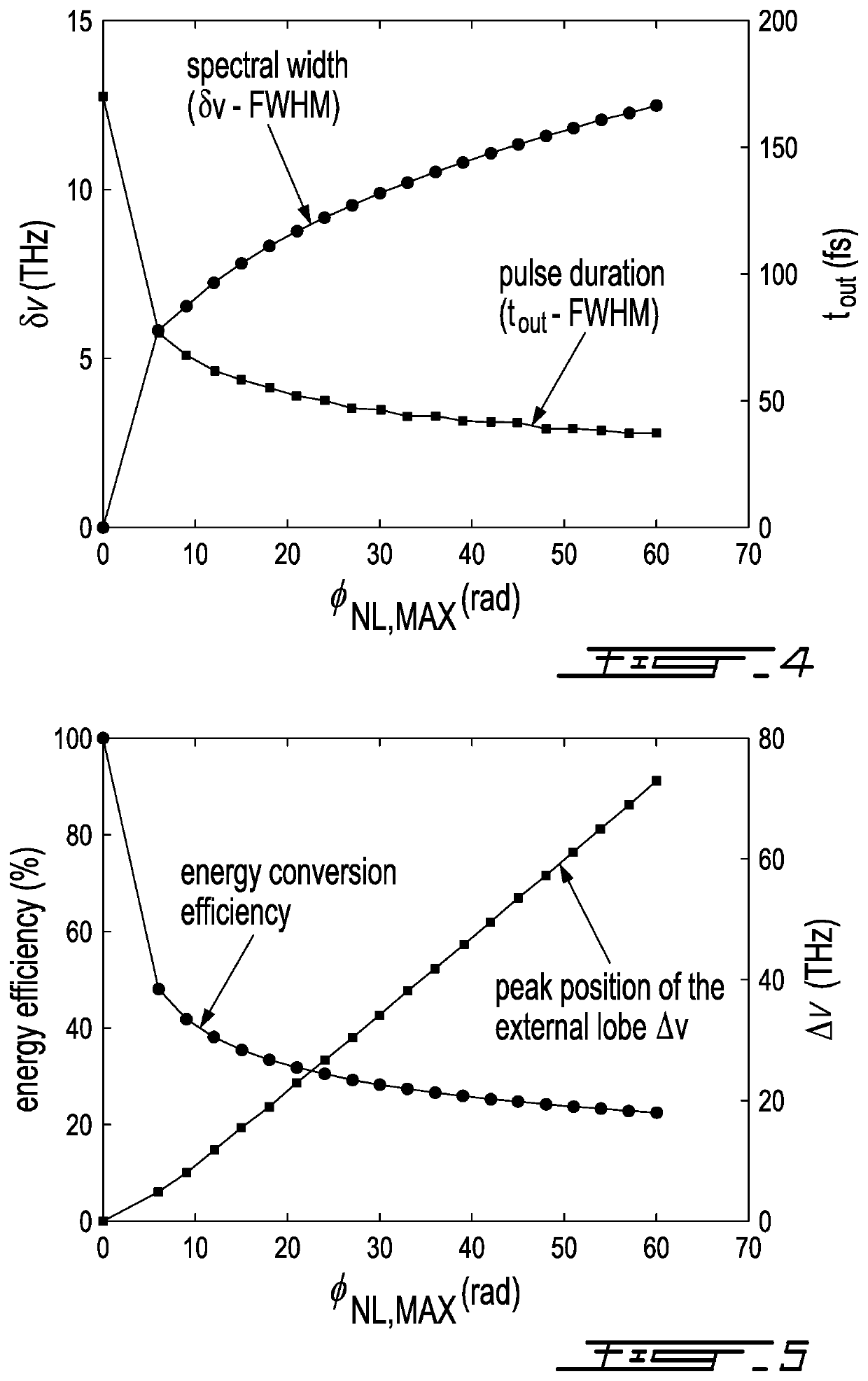Method and system for generating tunable ultrafast optical pulses
a technology of ultrafast optical pulses and optical pulses, applied in the direction of lasers, instruments, laser construction details, etc., can solve the problems of not allowing wavelength tuning over a broad spectral range, fundamental limitations of optical parametric chirped-pulse amplification systems, and imperfect beam quality
- Summary
- Abstract
- Description
- Claims
- Application Information
AI Technical Summary
Benefits of technology
Problems solved by technology
Method used
Image
Examples
Embodiment Construction
[0037]The present invention is illustrated in further details by the following non-limiting examples.
[0038]In a nutshell, a method according to an aspect of the present disclosure comprises spectrally broadening a input laser pulse by propagation into a nonlinear medium, and filtering a portion of the pulse laser output spectrum. A system according to an aspect of the present disclosure comprises a laser source, an optical unit adjusting the size of the input laser pulse from the laser source to a matching optical intensity in a propagation-free nonlinear medium and / or to a matching main mode of a nonlinear medium waveguide, and a spectral filter unit selecting, either in transmission or in reflection, at least one portion of the pulse laser output spectrum (FIG. 1).
[0039]The laser source is selected to generate optical input laser pulses of a pulse energy of at least 1 nJ and pulse duration of at most 1 ns.
[0040]The laser beam may be directed into the nonlinear medium once (single ...
PUM
| Property | Measurement | Unit |
|---|---|---|
| energy conversion efficiency | aaaaa | aaaaa |
| pressure | aaaaa | aaaaa |
| pulse energy | aaaaa | aaaaa |
Abstract
Description
Claims
Application Information
 Login to View More
Login to View More - R&D
- Intellectual Property
- Life Sciences
- Materials
- Tech Scout
- Unparalleled Data Quality
- Higher Quality Content
- 60% Fewer Hallucinations
Browse by: Latest US Patents, China's latest patents, Technical Efficacy Thesaurus, Application Domain, Technology Topic, Popular Technical Reports.
© 2025 PatSnap. All rights reserved.Legal|Privacy policy|Modern Slavery Act Transparency Statement|Sitemap|About US| Contact US: help@patsnap.com



